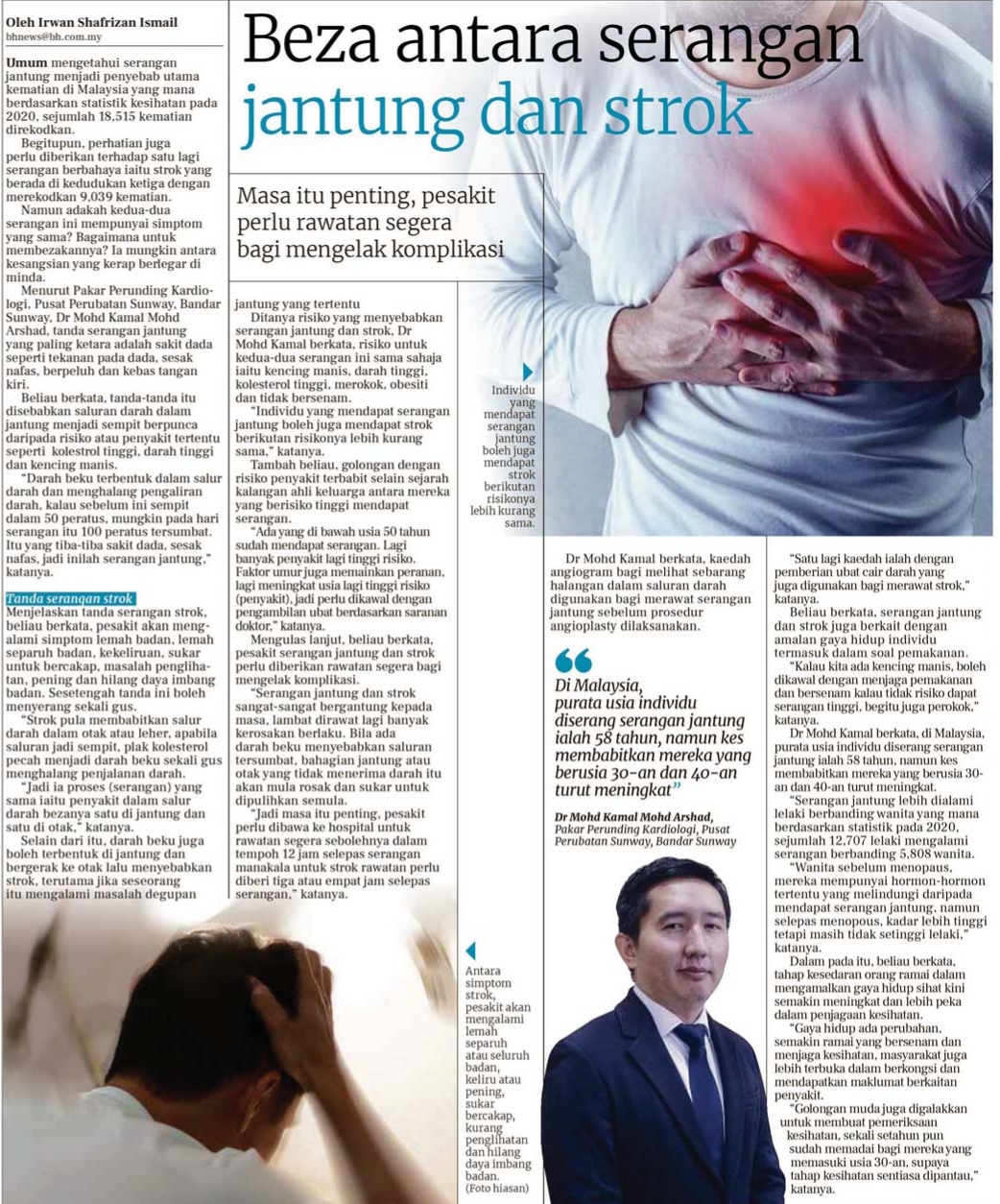Heart Attack and Stroke: What's The Difference?
28 May 2022

Heart attacks are a leading cause of death in Malaysia where 18,515 cases were recorded in 2020, however attention should be given to another dangerous attack which is stroke, recording 9,093 deaths. Yet, do these two conditions have the same symptoms? How can you tell the difference?
According to Dr Mohd Kamal Mohd Arshad, Consultant Cardiologist at Sunway Medical Centre, Sunway City, the most obvious signs of a heart attack are chest pain (pressure on the chest), shortness of breath, sweating and numbness in the left hand.
These symptoms are caused by the narrowing of blood vessels in the heart due to certain risks such as high cholesterol, high blood pressure and diabetes.
“Blood clots that form in blood vessels block blood from flowing and what may be narrowed by 50% could be 100% blocked on the day of the attack. That is when the person experiences sudden chest pain and shortness of breath, leading to a heart attack,” he said.
Signs of a stroke
Meanwhile, individuals experience weakness, confusion, difficulty speaking, vision problems, dizziness and loss of balance when it comes to stroke. These signs can strike at once.
“Stroke involves the narrowing of blood vessels in the brain or neck, where cholesterol plaques form blood clots, blocking blood flow. Besides this, blood clots can form in the heart and travel to the brain, causing a stroke, especially if the person has heart rate problems,” Dr Mohd Kamal said.
The risk factors of both conditions are the same, namely high blood pressure, high cholesterol, smoking, obesity and lack of exercise.
“Individuals who have a heart attack can also have a stroke because the risks are more or less the same. Those who have a family history are at a higher risk of getting these conditions. Age also plays a role where the older they get, the higher the risk,” he said.
He added that heart attack and stroke patients should be given immediate treatment to avoid complications.
"Heart attacks and strokes are very time dependent. When they are slow to be treated, a lot of damage occurs. When there is a blood clot that causes a blockage, the part of the heart or brain that does not receive blood will start to be damaged and become difficult to repair.
“Patients should be taken to the hospital for immediate treatment within 12 hours after a heart attack while for stroke, treatment should be given three or four hours after the attack,” he emphasised.
An angiogram is performed to find out any obstruction in the blood vessels before an angioplasty procedure is performed. Another method is by giving blood thinners, used to treat stroke.
Heart attacks and strokes are closely linked to an individual’s lifestyle including diet.
“Diabetes can be controlled by taking care of diet and exercise, otherwise they risk of a heart attack or stroke is higher. So are smokers,” he said.
In Malaysia, the average age for a heart attack is 58, but cases involving those in their 30s and 40s have increased.
“Heart attacks are more common among men than women where 12,707 men had attacks compared to 5,8080 women in 2020. Before menopause, women have certain hormones that protect them against getting a heart attack, however after menopause the rate is higher but still not as high as men,” Dr Mohd Kamal said.
The level of awareness in adopting a healthy lifestyle is increasing and people are more sensitive in taking care of their health.
“More and more people are changing their lifestyle. Society is also more open in sharing and getting information related to diseases. Young people are encouraged to have a health check-up once a year for those in their 30s, so that their health is constantly monitored,” he said.
Source: Berita Harian
Back




